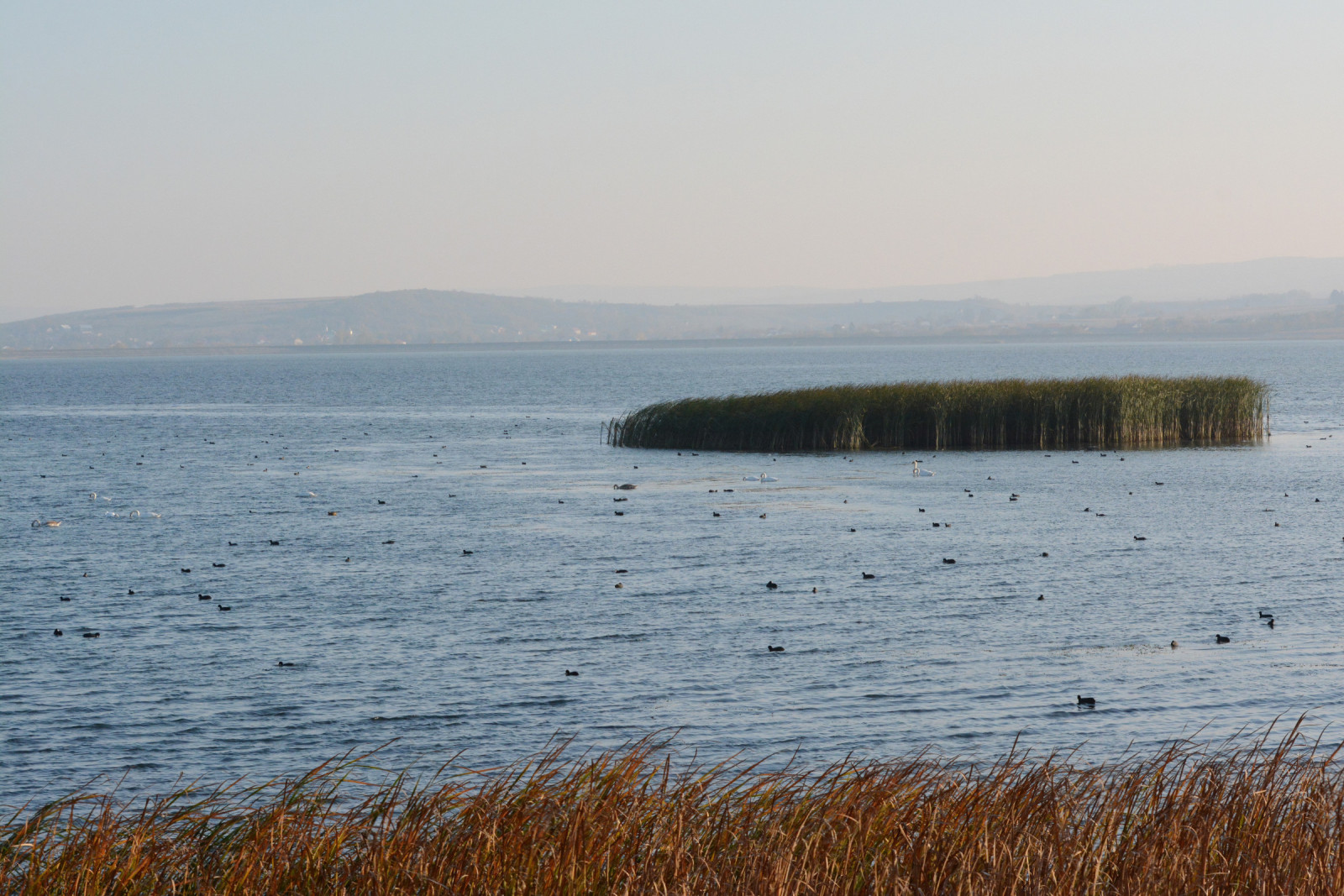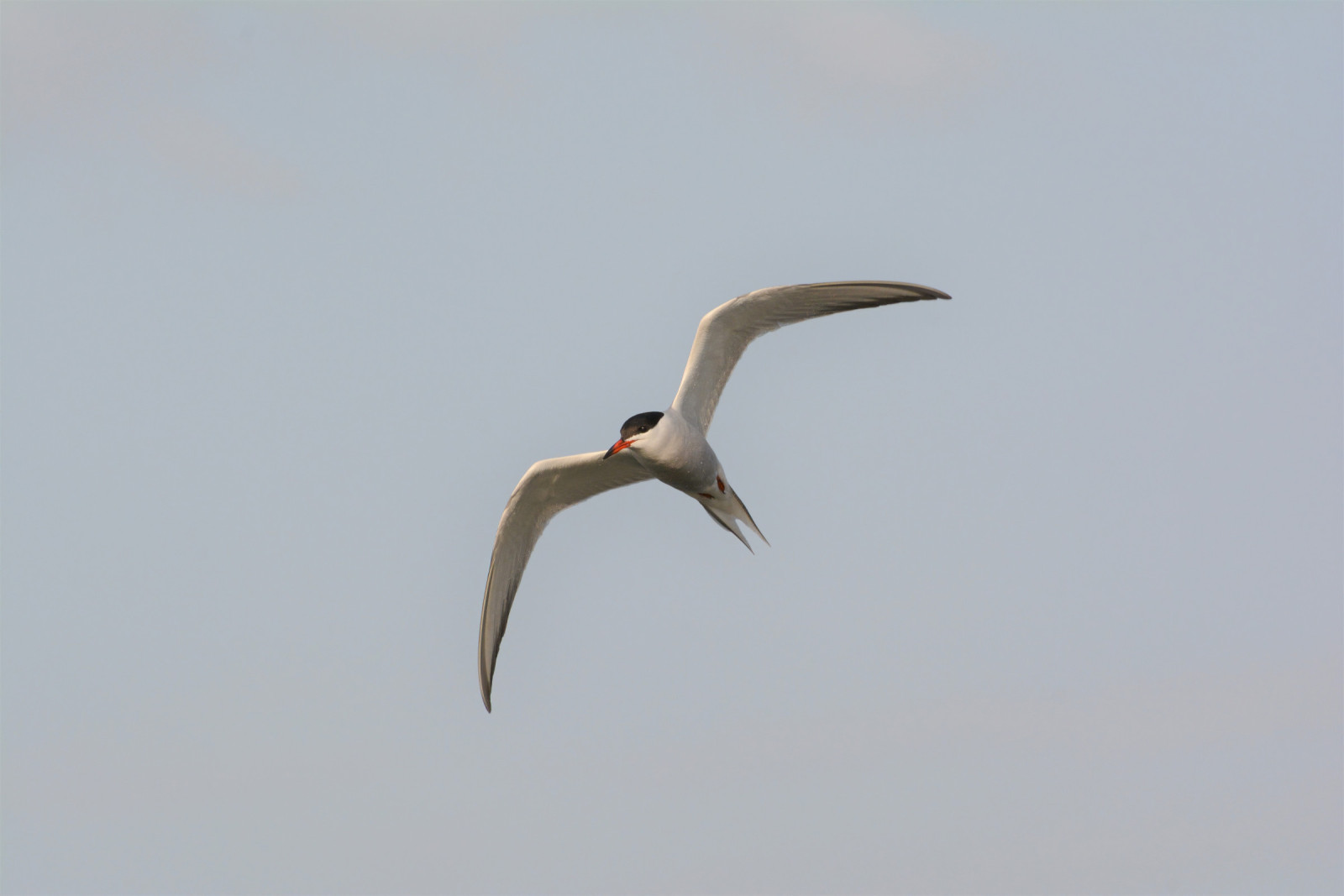Description
The lake has large surfaces of water and reed that offer very good opportunities for breeding and migrating aquatic birds. During the breeding season, in the reedbeds, there's a mixed colony of Καστανοκέφαλος Γλάρος , Αργυροτσικνιάς and Σταχτοτσικνιάς and local Καλαμόκιρκος can be seen all the time flying around. During migration, large flocks of ducks, swans, cormorants, geese and in smaller numbers grebes and divers stop by.
Waders are common but in small numbers during migration, while in some years, when the water's level drops, the area attracts hundreds of different waders. Tern species are common too during migration and gulls can be seen year-round. If you are lucky, during migration you can also see (Ευρωπαϊκός) Γερανός or Ψαραετός . During winter, before the lake freezes, you can see mixed flocks of aquatic birds numbering in the thousands (most of them being Πρασινοκέφαλη Πάπια ) and if you are lucky a (Ευρωπαϊκός) Θαλασσαετός .
Details
Access
The lake is situated just east from the city of Siret, with 3 villages in its close proximity: Pădureni (in the west), Grămești (in the south) and Rogojești (in the east). You can either drive your way around the lake (the northern part is not recommended during winter or rainy days) or park your car along the lake wherever you can, leaving enough space for other cars to pass (there are plenty of such areas). You can start your tour after exiting the village of Pădureni to the south, immediately after getting out of the forest on the paved road. There, you can make a detour on an unpaved road that descends to the lakes western shore or you can follow the paved road for approximately a kilometer, until you see a gravel road that leads to Rogojești village and goes over the dam. You can follow the gravel road that follows the concrete shores up to the northern half of the lake. From there you have to follow the dirt road for another kilometer until you get to the northern part of the shore that is also concreted. Going up from there you will see that the lake is replaced by reedbeds exept for the northernmost part of the lake that has another smaller, open water area. If you continue going on the road you will get to a paved road that goes over the bridge and leads to the city of Siret and this is where the lake's tour ends. Of course, you can do it in the opposite direction too.
Terrain and Habitat
Forest , Wetland , Plain , River , Reedbeds , Agriculture , Scattered trees and bushes , Grassland , Valley , Lake , Mud flats , City/villageConditions
Flat , Wet , No shadow , Open landscape , DustyCircular trail
YesIs a telescope useful?
YesGood birding season
All year roundBest time to visit
Summer , Spring migration , Autumn , Autumn migration , SpringRoute
Paved road , Wide path , Unpaved roadDifficulty walking trail
EasyAccessible by
Foot , Bicycle , CarBirdwatching hide / platform
NoExtra info
Other raptors that have been seen in the area: Κραυγαετός , Χειμωνόκιρκος , Λιβαδόκιρκος , Χιονογερακίνα , Αετογερακίνα , (Ευρωπαϊκό) Μαυροκιρκίνεζο , Δεντρογέρακο , Πετρίτης , Νανογέρακο
Other wildfowl and aquatic birds that have been seen here: Νανόκυκνος , Κοκκινόχηνα , Καπακλής , Ψαλίδα (του Βορά) , (Ευρωπαϊκή) Σαρσέλα , (Ευρωπαϊκη) Βαλτόπαπια , Σταχτόπαπια , Βελουδόπαπια , (Ευρωπαϊκή) Μαυρόπαπια , Θαλασσοπρίστης , Νανοπρίστης , Κοκκινοβουτηχτάρι , Μαυροβουτηχτάρι , Χειμωνοβουτηχτάρι , Λαγγόνα , (Κοινός) Νυχτοκόρακας , (Κοινός) Λευκοτσικνιάς , Πορφυροτσικνιάς , (Ευρασιατική) Χουλιαρομύτα
Rails and crakes seen in the area: (Ευρωπαϊκή) Νεροκοτσέλα , Μικροπουλάδα , Στικτοπουλάδα , Αρκοπετείναρο
Waders that have been observed here: (Ευρωπαϊκός) Στρειδοφάγος , Καλαμοκανάς , Ποταμοσφυριχτής , Αμμοσφυριχτής , Αργυροπούλι , (Ευρωπαϊκό) Βροχοπούλι , (Ευρωπαϊκή) Καλημάνα , Μαχητής , Buff-breasted Sandpiper , Κοκκινοσκαλίδρα , Λευκοσκαλίδρα , Χαλικοκυλιστής , Λασποσκαλίδρα , Δρεπανοσκαλίδρα , Ραβδοσκαλίδρα , Σταχτιά Νανοσκαλίδρα , (Κοινή) Νανοσκαλίδρα , Λασπότρυγγας , Δασότρυγγας , Ακτίτης , Κοκκινοσκέλης , Μαυρότρυγγας , Πρασινοσκέλης , (Ευρωπαϊκή) Λιμόζα , (Ευρασιατική) Τουρλίδα , Σιγλίγουρος , (Κοινό) Μπεκατσίνι , Ερυθρόλαιμος Φαλαρόποδας
Other gulls observed here: Ασημόγλαρος της Μεσογείου , Ασημόγλαρος της Κασπίας , Θυελλόγλαρος , Νανόγλαρος , Τριδάκτυλος Γλάρος
Terns observed in the area: Ποταμογλάρονο , (Ευρωπαϊκό) Νανογλάρονο , Μουστακογλάρονο , Μαυρογλάρονο , Αργυρογλάρονο

.jpeg)

